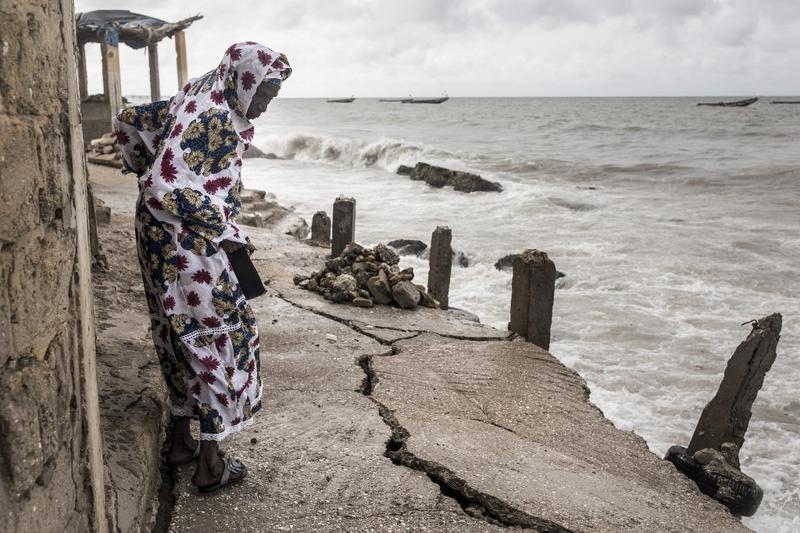 A woman looks down a newly formed crack in the walkway which leads to the Mosque in Bargny, Senegal on Sept 18, 2020. Fishing villages like Bargny have been fighting the rising seas for decades. (PHOTO / AFP)
A woman looks down a newly formed crack in the walkway which leads to the Mosque in Bargny, Senegal on Sept 18, 2020. Fishing villages like Bargny have been fighting the rising seas for decades. (PHOTO / AFP)
Rich countries risk missing their goal to provide US$100 billion a-year by 2020 to help poorer nations combat climate change, after funding slowed in the year since President Donald Trump vowed to pull the US out of the global Paris deal.
Climate finance from developed countries reached US$78.9 billion in 2018, far short of the target agreed in 2015 by 197 countries as part of the Paris Agreement, according to an OECD study published Friday.
Even though climate finance rose 11 percent in 2018 from US$71.2 billion in 2017, it was at a slower growth rate than seen in 2016 to 2017.
Efforts have also been derailed by Trump’s decision to halt US$2 billion of payments to the United Nations’ Green Climate Fund, the world’s largest international finance effort dedicated to addressing climate change
ALSO READ: Peaking emissions before 2030 will help world fight climate change
“Donors need to urgently step up their efforts to support developing countries to respond to the immediate effects of the pandemic and to integrate climate actions into each country’s recovery from the COVID-19 crisis to drive sustainable, resilient and inclusive economic growth,” said OECD Secretary-General Angel Gurria.
Efforts have also been derailed by Trump’s decision to halt US$2 billion of payments to the United Nations’ Green Climate Fund, the world’s largest international finance effort dedicated to addressing climate change. The US had previously been one of the biggest climate donors before Trump took office.
Key numbers from the research:
The level of private climate finance mobilized was virtually flat in 2018, at US$14.6 billion
More than a third of total climate funds from 2016-18 was for energy, while 14 percent went to transport and storage
Asia benefited from 43 percent the of total between 2016 and 2018, while Africa got 25 percent and the Americas 17 percent
READ MORE: European Parliament cements position on climate change law
Early 2019 data from the European Union and its member states, who provide the biggest chunk of money, shows direct country-to-country climate finance may have continued to increase last year, the OECD said, providing some signs that the target remains in sight.
Countries are increasingly choosing loans over grants to provide climate finance. Between 2013 and 2018, the share of loans in total public finance provided grew from 52 percent to 74 percent, while the share of grants saw a decline, the report said.
That approach has been criticized by the charity Oxfam, because recipient countries end up having to pay significant amounts in loan repayments and interest. It estimated that as a result, climate finance in 2017 was just a third of that reported by developed countries.


